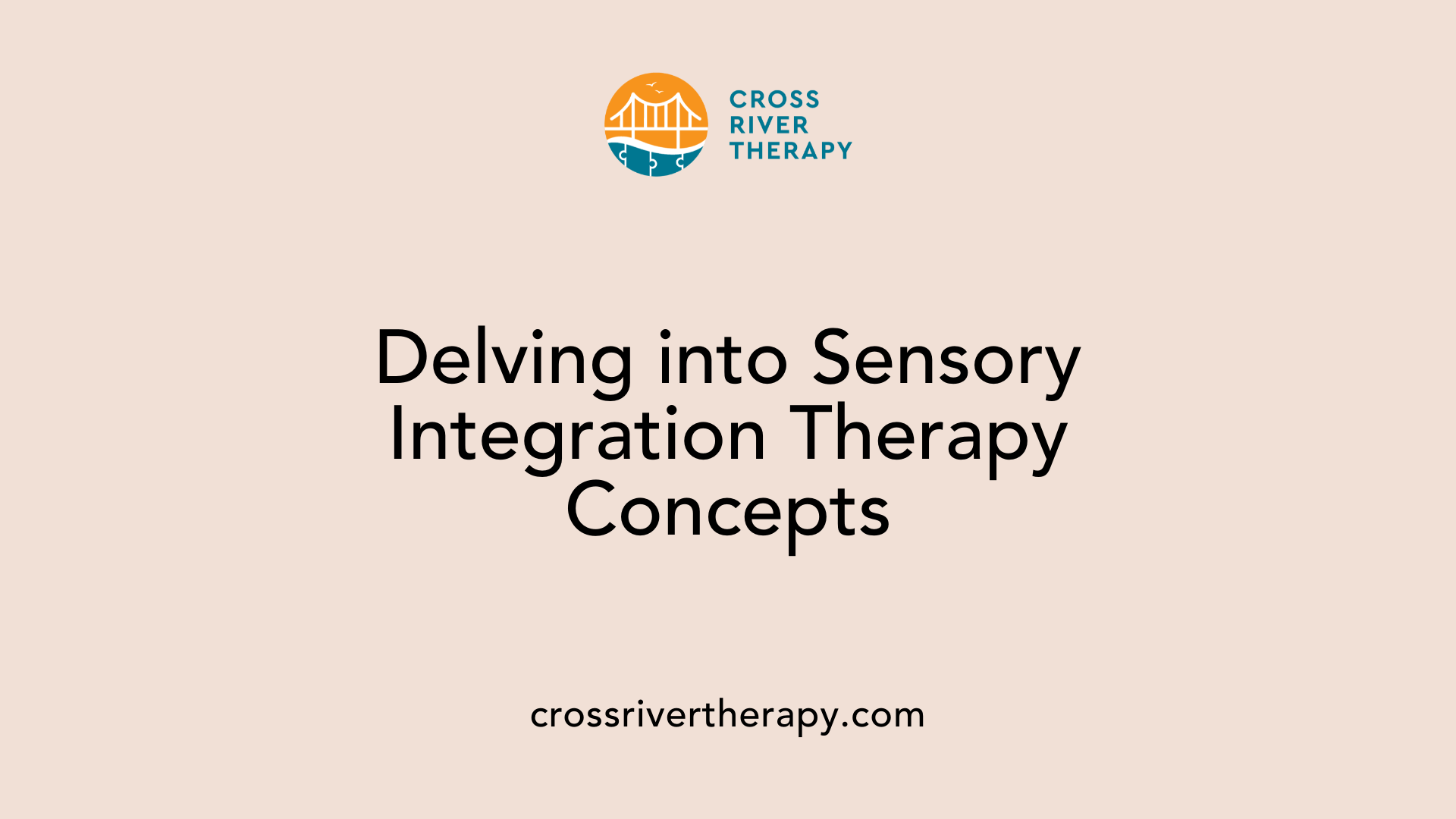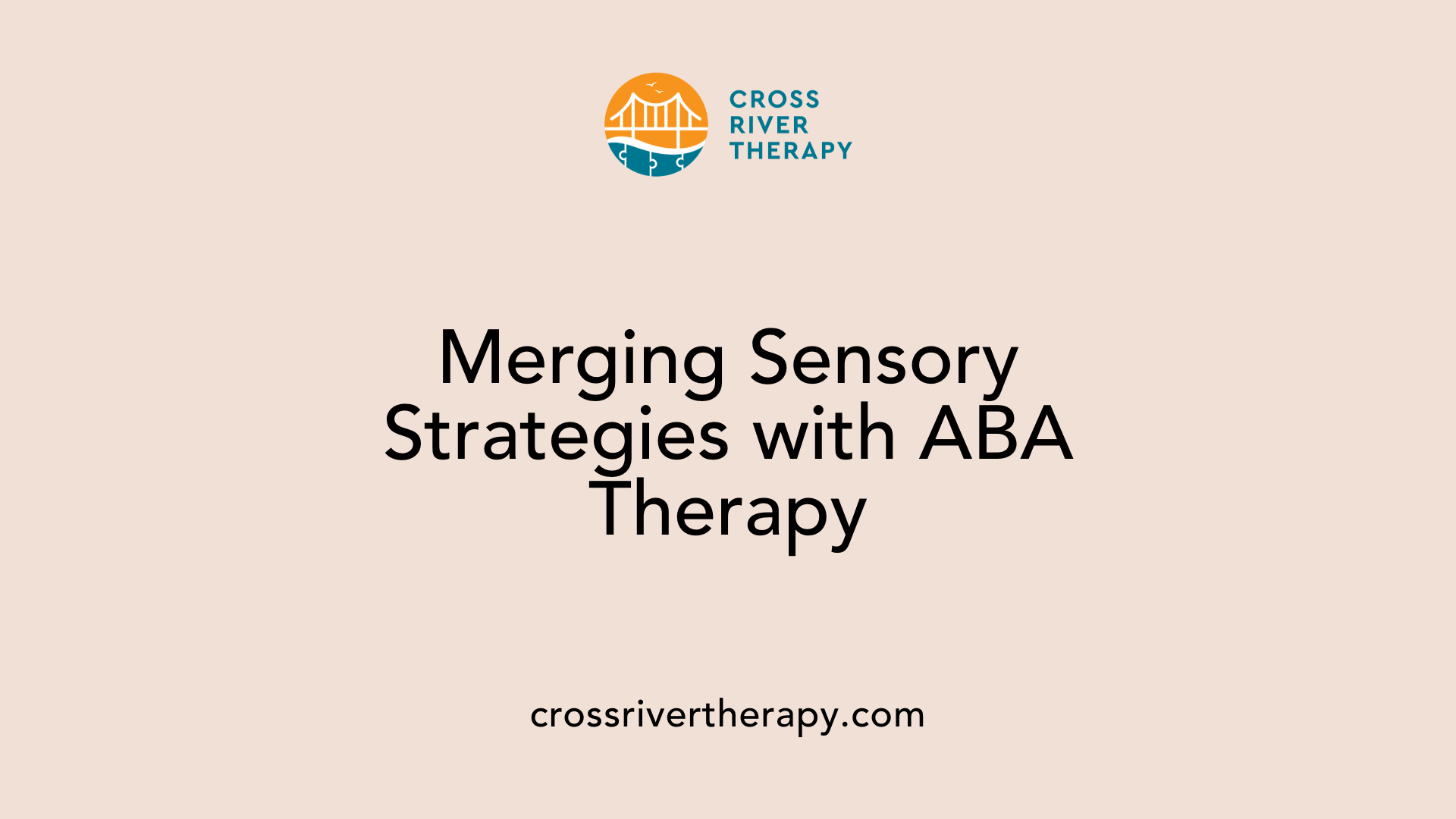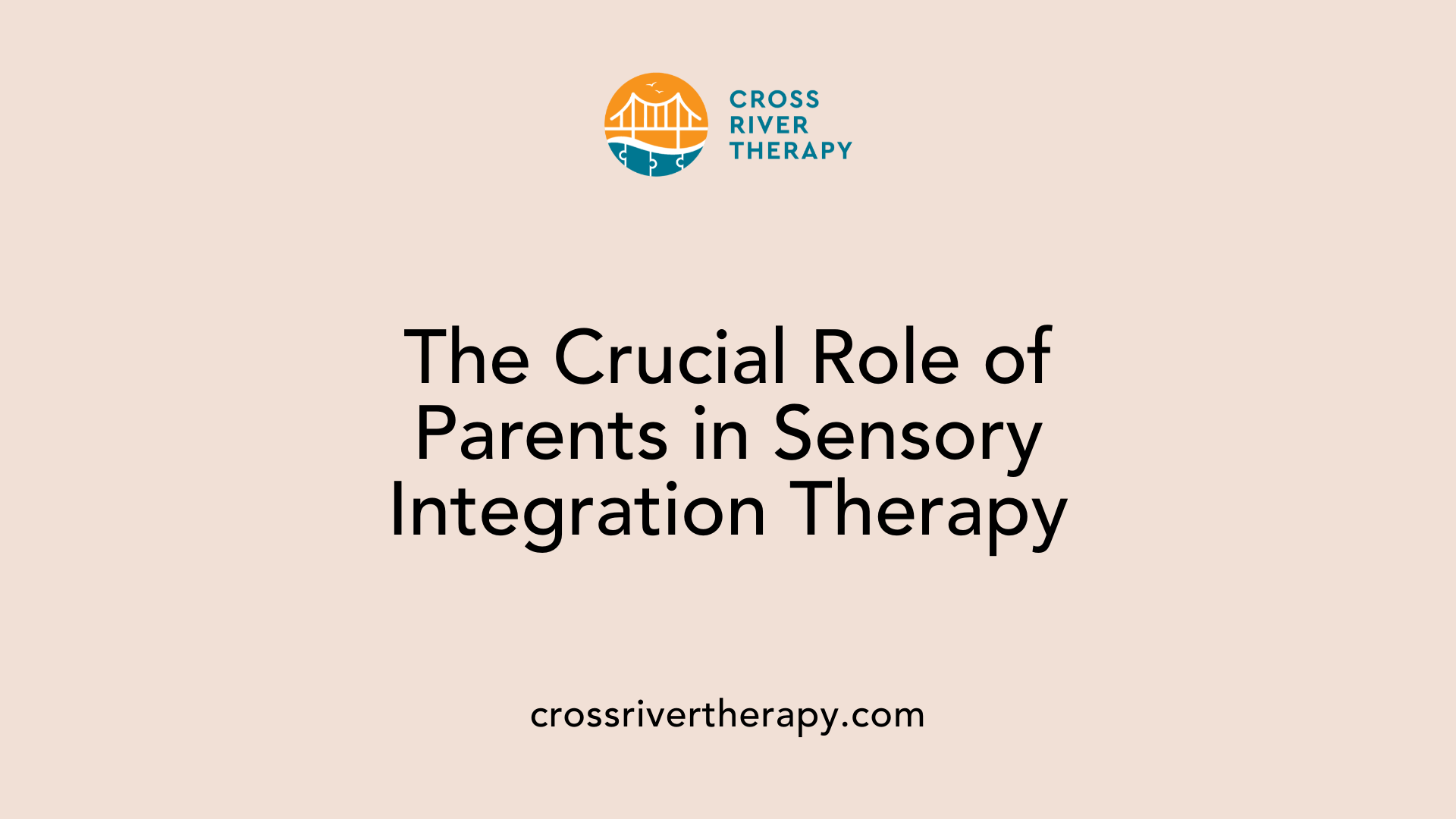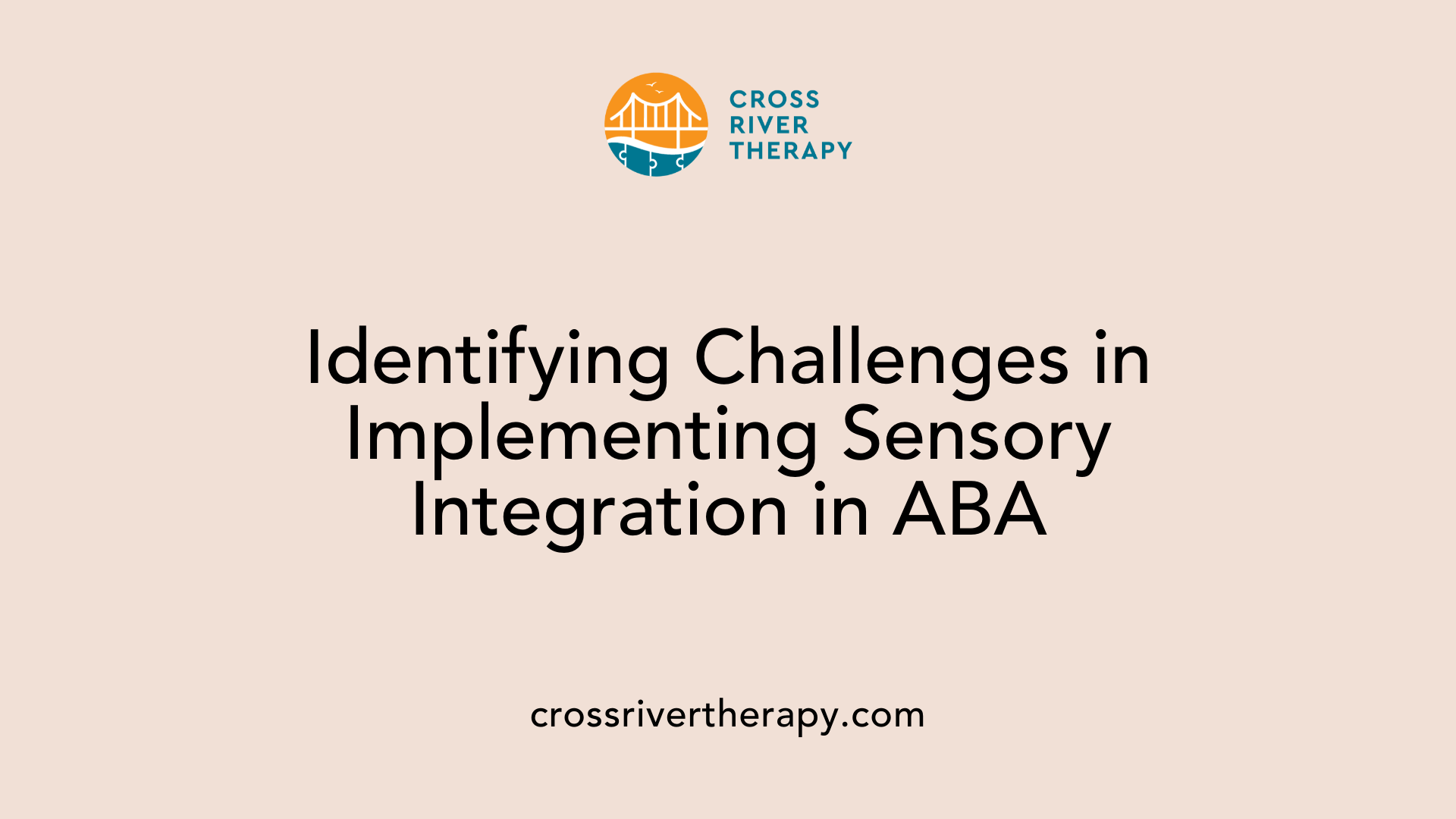Why Center-Based ABA Therapy Often Includes Sensory Integration Activities
Unlocking the Potential of ABA Through Sensory Integration
Introduction
Center-based Applied Behavior Analysis (ABA) therapy is a cornerstone in the development and rehabilitation of children with Autism Spectrum Disorder (ASD). While ABA therapy itself is highly structured and evidence-based, a unique element often integrated into center-based settings is Sensory Integration. This strategic inclusion addresses sensory processing issues prevalent in individuals with autism, enhancing therapeutic outcomes and overall quality of life. This article explores why sensory integration activities are incorporated within center-based ABA therapy, uncovering the synergy between sensory processing interventions and behavior modification techniques.
Defining Center-Based ABA Therapy

What is center-based ABA therapy?
Center-based ABA therapy is a structured approach to Applied Behavior Analysis that is specifically designed for children on the autism spectrum. Conducted in a distraction-free environment, this therapy is delivered by a team of trained professionals, including Board Certified Behavior Analysts (BCBA) and Registered Behavior Technicians (RBT).
The therapy focuses on individualized curricula that target each child's unique strengths and developmental areas, utilizing techniques like positive reinforcement, prompting, and shaping to teach new skills and reduce unwanted behaviors. Additionally, parent training is a crucial component, providing parents with strategies to support their child's learning at home. Overall, center-based ABA therapy aims to enhance the child's quality of life through skill acquisition and comprehensive progress monitoring.
Structure and environment of center-based therapy
The environment of center-based ABA therapy facilitates controlled exposure to social interactions, essential for children with Autism Spectrum Disorder (ASD). Sensory integration activities are often included, helping to manage sensory experiences during these interactions. The structured settings minimize distractions, allowing children to focus on learning and development effectively.
Professional roles in therapy delivery
Qualified professionals like BCBAs and RBTs play pivotal roles in delivering center-based therapy. They ensure that sensory integration strategies are implemented effectively in a supportive environment, enhancing therapy efficacy. Their expertise is crucial in tailoring interventions based on each child’s unique sensory sensitivities and preferences.
Parent involvement
Collaboration with caregivers is fundamental in ABA therapy. Parents are engaged in training sessions, learning how to create a supportive sensory environment at home. By reinforcing strategies discussed in therapy, parents play an integral part in their child's overall progress, emphasizing the importance of a holistic approach to therapy.
Exploring Sensory Integration Therapy

What is sensory integration therapy and its central principle?
Sensory integration therapy (SIT) is a therapeutic approach founded by occupational therapist A. Jean Ayres in the 1970s. It aims to assist children who experience challenges in processing sensory information. The core principle centers on the brain’s capacity to consistently organize and respond to sensory inputs like touch, sight, and sound. This organization is crucial for the development of essential motor, cognitive, and social skills.
SIT employs play-based interventions to help children cultivate adaptive responses to various sensory stimuli. Engaging activities often include swinging, deep pressure tasks, and brushing techniques, designed to stimulate different sensory systems, thereby enhancing the child's body awareness and overall functioning. This therapy is particularly supportive for those with conditions like Autism Spectrum Disorder and Sensory Processing Disorder, promoting effective interactions within their environments.
Therapeutic techniques in SIT
Included in the framework of SIT are various therapeutic techniques that focus on engaging children in active sensory-rich experiences. Some common methods are:
- Tactile Activities: These include playing with various textures, which can help children understand and integrate touch sensations.
- Vestibular Exercises: Activities such as swinging or spinning can help children develop balance and spatial awareness.
- Proprioceptive Input: Engaging in heavy work tasks, like pushing or pulling, aids in body awareness and self-regulation.
SIT’s structure not only addresses sensory processing difficulties but also fosters growth in social and behavioral domains. It is vital in developing effective coping mechanisms, enhancing engagement, and improving overall well-being for children, particularly those on the autism spectrum. Through careful implementation, the positive effects of these interventions can be substantial.
The Intersection of Sensory Integration and ABA Therapy

Integration of Sensory Activities in ABA
Sensory integration activities play a crucial role in Applied Behavior Analysis (ABA) therapy, particularly for children with Autism Spectrum Disorder (ASD). These activities are designed to address sensory processing challenges, which can significantly impact behavior and emotional regulation. By identifying sensory preferences and sensitivities, therapists can tailor interventions that include sensory-rich experiences to enhance engagement in therapy.
Incorporating sensory integration techniques allows therapists to create individualized plans that tackle both behavioral goals and sensory processing needs. For instance, structured interventions can include tactile play, proprioceptive exercises, and vestibular activities. These sensory-based activities not only support behavior modification but also help children develop coping strategies for sensory overload, promoting better responses to sensory stimuli.
Enhancing ABA Through Sensory Techniques
By combining ABA with sensory integration, therapists can provide a more comprehensive approach to treatment. This integration improves the effectiveness of ABA strategies, as comfortable and well-regulated individuals are more likely to participate actively in therapy sessions. One example is the use of positive reinforcement; rewarding a child for successfully managing their sensory responses can encourage continued engagement in interventions.
These methods are particularly crucial in center-based ABA therapies, where controlled environments facilitate social interaction while addressing sensory needs. The effectiveness of this combined approach can increase when qualified professionals, such as Board Certified Behavior Analysts (BCBAs), implement evidence-based sensory strategies and collaborate with families. This collaboration ensures that therapy extends into the home, reinforcing skills and enhancing overall well-being, which ultimately leads to improved outcomes for individuals in therapy.
Addressing Sensory Processing Challenges
Why is addressing sensory processing an important element in ABA therapy for children with autism?
Sensory processing challenges are common in children with autism and can significantly impact their behavior, emotions, and ability to engage fully in therapy. By identifying specific sensory triggers and the consequences of sensory-related behaviors, ABA therapists can develop personalized intervention strategies.
This tailored approach not only addresses immediate behavioral challenges by modifying responses to sensory stimuli but also fosters long-term progress in managing and adapting to sensory experiences.
Identifying sensory triggers
The first step in effective ABA therapy involves recognizing an individual's unique sensory sensitivities and preferences. This identification process helps therapists understand what specific stimuli might provoke hyper-reactivity or hyporeactivity in a child. By knowing these triggers, therapists can predict potential challenges and plan accordingly.
Developing individualized sensory plans
Following the identification of sensory triggers, therapists craft individualized sensory plans that include structured interventions. These plans utilize techniques like sensory breaks and the incorporation of sensory-friendly materials, allowing children to manage stimuli more effectively. Sensory integration activities—ranging from tactile to vestibular exercises—can also be embedded within therapy sessions, enhancing children's adaptive responses.
Through continuous collaboration with families, these plans can be reinforced at home, ensuring lasting benefits. By adapting therapy as children's sensory needs evolve, ABA can promote skill development and emotional regulation, supporting overall well-being.
Types of Sensory Integration Activities in ABA Therapy
What types of sensory integration activities are typically included in center-based ABA therapy?
Center-based ABA therapy incorporates a variety of sensory integration activities aimed at enhancing sensory processing abilities in children with autism. Here are some examples:
- Tactile Activities: Children engage with textured materials, sand, or water play to improve touch sensitivity.
- Proprioceptive Activities: Weight-bearing exercises such as lifting heavy objects or crawling through tunnels help children understand body positioning and movements.
- Vestibular Activities: Engaging in activities like swinging, rocking, or balancing aids in processing movement and balance.
These activities serve to address both hyper-reactivity and hyporeactivity related to sensory stimuli, facilitating better integration of sensory information into daily life.
Purpose of sensory activities
The incorporation of sensory integration activities in ABA therapy serves multiple purposes:
- Improve Sensory Processing: By actively engaging in sensory-rich experiences, children can enhance their ability to process and respond to sensory input.
- Promote Adaptive Responses: Sensory activities help children develop appropriate reactions to sensory stimuli, leading to better emotional regulation and engagement in various settings.
- Facilitate Skill Development: These activities support learning by allowing children to assimilate sensory experiences into functional behaviors, which is crucial for overall skill acquisition in ABA therapy.
By focusing on these sensory integration activities, ABA therapy creates a supportive environment that nurtures the sensory needs and behavioral goals of each child.
Benefits of Sensory Integration in ABA Settings
What benefits do sensory integration activities provide when used in conjunction with ABA therapy?
Sensory integration activities, when combined with ABA therapy, present a variety of advantages for children on the autism spectrum. These activities are designed to enhance sensory processing capabilities, which is crucial for children who often experience sensory overload or under-responsiveness. By effectively targeting these challenges, sensory integration activities help regulate behavior, leading to more manageable emotional responses.
These activities foster better engagement during therapy sessions by enabling children to assimilate sensory information into functional behaviors. Consequently, children demonstrate improved emotional regulation, which is vital for coping with daily social interactions and educational demands.
Enhanced engagement and behavior
Incorporating sensory integration techniques within ABA facilitates a more engaging therapy experience. For instance, children are rewarded for utilizing coping mechanisms during moments of sensory overload, helping them associate positive outcomes with adaptive behaviors. This reinforcement mechanism improves their overall behavior and motivates further participation in therapy.
Improving adaptive responses
Furthermore, sensory integration activities can significantly elevate adaptive responses to sensory inputs. Through structured interventions, children learn to manage their reactions to various sensory stimuli—ultimately leading to enhanced daily functioning and improved interactions within their environment. The collaborative approach involving parents and qualified professionals ensures that these strategies are effectively integrated both in therapy settings and at home, reinforcing progress and comfort with sensory integration.
Occupational Therapy's Role in Sensory Integration
Approaches used in occupational therapy
Occupational therapy employs a variety of methods to support sensory integration for children, particularly those with autism. The two primary approaches are:
- Bottom-Up Approach: This method focuses on addressing foundational sensory processing issues. Therapists work directly on enhancing the child’s sensory awareness and responses, providing targeted interventions that cater to individual sensory deficits.
- Top-Down Approach: In this approach, the emphasis is on modifying the sensory environment or the tasks to accommodate the child’s needs. For example, adapting a classroom setting can help reduce sensory overload, allowing the child to focus better on learning activities.
These approaches create a holistic framework that addresses both behavior and sensory needs effectively.
Integration with ABA therapy methods
When integrated into ABA therapy, occupational therapy techniques enhance the overall therapeutic experience. ABA therapists often collaborate with occupational therapists to ensure that sensory integration activities are included in the treatment plans, which can encompass:
- Customized Sensory Integration Activities: Such activities are designed to help children manage sensory stimuli effectively, addressing both hyper-reactivity and hyporeactivity.
- Structured Interventions and Goals: By setting specific behavioral goals aligned with sensory processing needs, therapists can create a curriculum that supports skill acquisition while minimizing distractions.
The collaboration between therapy disciplines provides a comprehensive approach that not only enhances behavior modification but also enriches sensory processing skills, improving the child’s overall adaptability and response in daily life.
Effectiveness and Outcomes of Sensory Integration Strategies
How effective are sensory integration strategies in enhancing ABA therapy outcomes?
The effectiveness of sensory integration strategies in enhancing ABA therapy outcomes, while still a developing field of study, shows promise. Research indicates that play-based sensory integration can lead to significant improvements in sensory processing, adaptive skills, and overall engagement in therapy when implemented correctly. This results in better behavioral and emotional regulation, which is critical for achieving success in ABA therapy.
Incorporating sensory integration activities into ABA therapy helps children manage both hyper-reactivity and hyporeactivity. By addressing inappropriate reactions to sensory stimuli, these strategies not only support behavioral goals but also improve overall engagement and participation in therapeutic sessions.
Evidence supporting sensory integration
Studies that adhere to specific principles of fidelity suggest that sensory integration therapy may yield positive outcomes for children with autism. The incorporation of tactile, proprioceptive, and vestibular activities enriches the therapy environment, promoting active engagement and better processing of sensory information.
Occupational therapy interventions also highlight the significance of a balanced approach, merging 'bottom-up' and 'top-down' strategies. This emphasis on individualized needs within a controlled setting facilitates effective learning and social skills development.
Overall, while continuous research is necessary, current evidence supports the inclusion of sensory integration strategies as beneficial components of ABA therapy, enhancing both skill acquisition and emotional well-being in children on the autism spectrum.
Creating a Supportive Sensory Environment in ABA Centers
What considerations go into creating a sensory-friendly environment in ABA centers?
Creating a sensory-friendly environment in ABA therapy centers is crucial for effectively supporting children on the autism spectrum. A well-structured sensory space considers various elements:
- Sensory-Friendly Materials: Use of soft textures and innovative materials that are calming and engaging.
- Lighting: Appropriate lighting design reduces harsh fluorescents, utilizing softer and adjustable lighting options instead.
- Noise Control: Managing sound levels with soundproof panels and quiet zones prevents auditory overload.
- Structured Layout: Thoughtfully arranged spaces that facilitate both quiet activities and areas for interactive play encourage exploration while minimizing distractions.
Board Certified Behavior Analysts (BCBAs) and Registered Behavior Technicians (RBTs) play an essential role in designing and maintaining these environments. They not only assess the sensory needs of each child but also implement tailored strategies to enhance the therapeutic experience.
With their expertise, professionals ensure that children can engage in therapy without the added stress of sensory challenges, promoting a productive learning atmosphere.
Integrating Sensory Needs into Individualized ABA Programs
How are sensory needs incorporated into individualized ABA therapy programs?
Sensory needs play a crucial role in shaping individualized ABA therapy programs. The integration begins with identifying each child's unique sensory preferences and sensitivities through thorough assessments. Therapists evaluate how a child reacts to various sensory inputs, which allows them to tailor interventions that are more effective and engaging.
By incorporating strategies like sensory breaks and sensory-friendly materials, therapists can better manage sensory-related challenges. For instance:
- Sensory Breaks: Planned intervals for a child to engage in calming activities can help them reset during therapy sessions.
- Sensory Activities: Activities designed to address specific sensory preferences can enhance the child’s engagement and focus, making the overall experience more beneficial.
This customized approach ensures that ABA therapy goes beyond just addressing behavioral goals. It also accommodates sensory processing issues, paving the way for the child’s development and adaptation in various settings.
Importance of Collaboration with Caregivers
Collaboration with caregivers is essential in this process. Parents and guardians are often engaged in training sessions to learn how to create a supportive sensory environment at home. This collaboration reinforces therapy outcomes, making the transition between therapy sessions and home life more seamless and effective.
In essence, the incorporation of sensory needs into ABA programs is a dynamic process that evolves with the child’s changing requirements, promoting continuous learning and adaptation for better therapeutic outcomes.
Parental Involvement and Training in Sensory Integration

What is the role of parental involvement in ABA therapy with sensory integration components?
Parental involvement is vital in reinforcing sensory integration strategies outside of the center-based ABA therapy setting. Parents are trained to continue sensory-based interventions at home, creating a consistent and supportive environment that aligns with the therapy goals.
By understanding and participating in their child's sensory strategies, parents can help maintain progress and facilitate greater independence and comfort for their child in various settings. This collaboration ensures that the techniques learned during therapy sessions are effectively integrated into daily life, enhancing the child's development.
Training provided to families
Training provided to families typically includes specific sensory strategies, such as:
- Sensory Breaks: Teaching parents when and how to implement sensory breaks based on their child's needs.
- Sensory-Friendly Materials: Guiding parents on how to create sensory-friendly environments using appropriate tools and materials.
- Behavioral Approaches: Equipping parents with behavior management techniques that can be utilized at home to support their child's learning experiences.
The partnership between parents and professionals, such as Board Certified Behavior Analysts (BCBAs) and Registered Behavior Technicians (RBTs), is crucial for maximizing the effectiveness of sensory integration within ABA therapy.
Challenges and Limitations of Sensory Integration in ABA Therapy

Current Limitations in Research
Sensory integration therapy (SIT) has garnered interest due to its play-based interventions, enabling children to engage actively through sensory-rich experiences. However, the research supporting its effectiveness remains sparse. Current studies often lack rigorous standards, making it challenging to assess the overall impact of sensory integration techniques within Applied Behavior Analysis (ABA) therapy. Ongoing research is essential to deepen our understanding of how sensory integration can be optimally integrated into ABA methods and to validate observed benefits in various developmental domains.
Challenges in Implementation
What challenges exist in implementing sensory integration activities alongside ABA therapy?
Despite the potential benefits, several challenges hinder the effective implementation of sensory integration activities in ABA therapies. For instance, the limited evidence base requires practitioners to exercise caution when developing individualized sensory plans. Standardizing interventions proves challenging as each child presents unique behavioral responses and sensory preferences. Consequently, therapists must be trained and adept at modifying these strategies, which can place a strain on resources and time.
In many cases, the success of sensory integration techniques depends on the ability to adapt with fidelity. This adaptability requires professionals to stay updated with the latest findings and best practices while collaborating with caregivers to create a cohesive sensory environment at home. Thus, while sensory integration shows promise in enhancing behavioral outcomes in ABA therapy, the balance of effective customization and empirical support remains a pertinent challenge.
Continuous Evolution and Future Directions of ABA with Sensory Integration
Adapting to Changing Needs in Therapy
The landscape of Applied Behavior Analysis (ABA) therapy is in constant flux, primarily due to the diverse sensory processing needs of individuals on the autism spectrum. As therapists identify unique sensory sensitivities and preferences, they must continuously adapt their approaches. Tailoring interventions, such as incorporating sensory breaks and sensory-friendly materials, enables therapists to respond effectively to changing needs.
Additionally, the role of collaboration with caregivers enhances the therapeutic environment, reinforcing effective sensory strategies at home, which contributes to a child’s overall progress. Continuous learning about each child's evolving sensory experiences ensures that therapy not only remains relevant but also significantly beneficial.
Future Research and Practices
The future of integrating sensory processing approaches within ABA therapy lies in continuous adaptation and learning, as well as ongoing research to enhance evidence-based practices. As understanding of sensory processing in individuals with autism evolves, therapy models will need to adapt to incorporate the latest findings and methodologies. Future directions may include more personalized and dynamic intervention strategies that are responsive to the individual sensory needs, thus improving therapeutic outcomes.
The incorporation of sensory integration activities will likely become more refined, aiding children in developing better emotional regulation and adaptive behaviors. Emphasizing play-based interventions that engage children through sensory-rich experiences will foster growth across multiple domains, ensuring a more comprehensive therapeutic approach.
Conclusion
The integration of sensory processing activities within center-based ABA therapy represents a significant advancement in the attention to the holistic needs of children with autism. By addressing sensory challenges, therapists can enhance the effectiveness of traditional ABA interventions, leading to a more supportive and comprehensive therapy experience. Continued research and collaboration among professionals and caregivers will ensure these strategies evolve, providing even greater therapeutic outcomes and contributions to the overall well-being and development of individuals with Autism Spectrum Disorder.
References
- All You Need to Know About ABA and Sensory Integration Therapy
- Introduction - Sensory integration therapy for children with autism ...
- Impact of Center-Based ABA Therapy Curriculum
- Sensory Processing: A Key Aspect of ABA Therapy
- Sensory Integration - Physiopedia
- Sensory Integration Therapy in Paediatric Rehabilitation - Physiopedia
- Sensory Integration - Physiopedia



